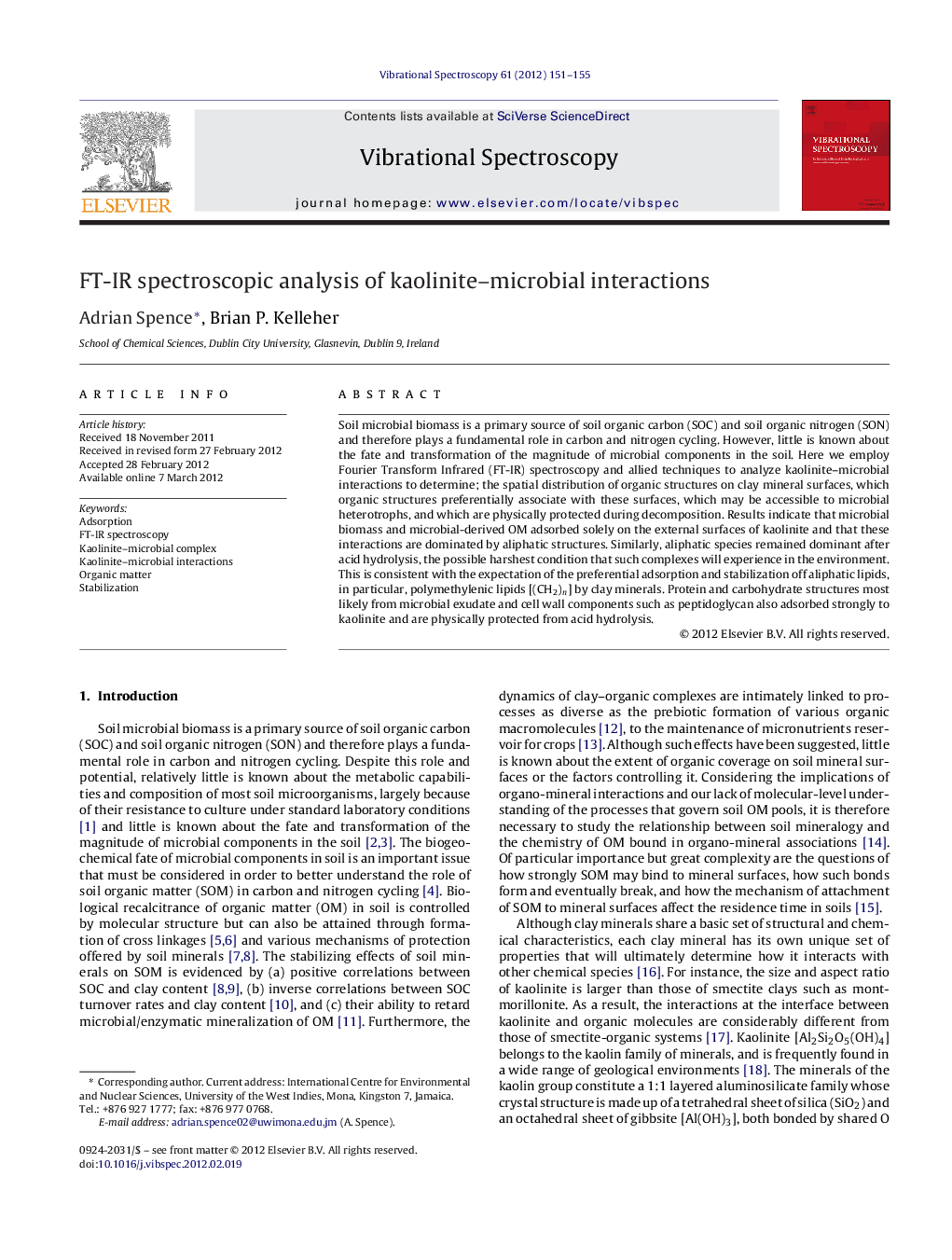| Article ID | Journal | Published Year | Pages | File Type |
|---|---|---|---|---|
| 1250523 | Vibrational Spectroscopy | 2012 | 5 Pages |
Soil microbial biomass is a primary source of soil organic carbon (SOC) and soil organic nitrogen (SON) and therefore plays a fundamental role in carbon and nitrogen cycling. However, little is known about the fate and transformation of the magnitude of microbial components in the soil. Here we employ Fourier Transform Infrared (FT-IR) spectroscopy and allied techniques to analyze kaolinite–microbial interactions to determine; the spatial distribution of organic structures on clay mineral surfaces, which organic structures preferentially associate with these surfaces, which may be accessible to microbial heterotrophs, and which are physically protected during decomposition. Results indicate that microbial biomass and microbial-derived OM adsorbed solely on the external surfaces of kaolinite and that these interactions are dominated by aliphatic structures. Similarly, aliphatic species remained dominant after acid hydrolysis, the possible harshest condition that such complexes will experience in the environment. This is consistent with the expectation of the preferential adsorption and stabilization off aliphatic lipids, in particular, polymethylenic lipids [(CH2)n] by clay minerals. Protein and carbohydrate structures most likely from microbial exudate and cell wall components such as peptidoglycan also adsorbed strongly to kaolinite and are physically protected from acid hydrolysis.
